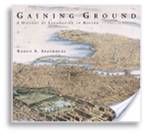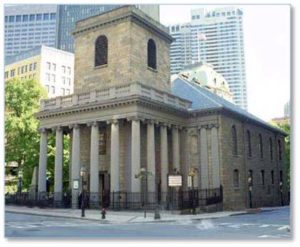A lot of readers put on their thinking caps to try their luck with my January Boston knowledge quiz about general topics and historical occurrences. I have fun putting these together. Also, I enjoy watching people match wits with my multiple-choice selections.
Putting the Quiz Together
First, I make selections across a variety of topics to appeal to an equally wide variety of people. Then I come up with a selection of answers that could well be the right ones—but are not. This gives me the most fun because I can imagine the respondents hovering over each, trying to decide which one is correct.
As a Boston tour guide and blogger, I have done so much research and written so many posts about the city that some of the questions seem simplistic to me. Those who haven’t put in that much time, however, may find them more difficult.
Then I put the content into the quiz-maker software. This can take time. After entering the content, I indicate the correct answers and weight them for points. Also, I tell the software how to respond after someone enters an answer, which is usually to show the correct selection. Finally, I format it into the blog and send it out.
And the Quiz Results Are . . .
Moving on to the results: 81 people took the “Test Your Knowledge of Boston” quiz. Over the past few weeks, I have noticed a trend. More of the answers skewed incorrect until I posted it with my Boston By Foot tour guide colleagues. Then the number of correct answers went up significantly. This makes sense. After all, Boston By Foot guides get the best training of any tour guides in the Hub of the Universe.
Question 1: Who said, “Boston is a city of sports, politics, and revenge?”
The first question garnered mostly correct answers: former Massachusetts Governor William Weld. I encountered this quote while doing some research on The Big Dig—the 20th century’s largest civil engineering project. I loved it, especially because it allowed me to spread answers across figures in sports and politics. While former governor Weld seems a less-likely choice that some of the others, most got him right.
Question 2: What was not invented in Boston?
This proved to be one of two simplest questions with almost everyone picking the right answer: Air Conditioning. That actually made me happy because it meant that people were aware of prominent Boston “firsts.” We have a lot to be proud of in the Hub and innovating across culture, science, and technology is one of them.
Question 3: How many Catholic Churches are in the Back Bay?
On this question, responses spread across both A-One and B-None, as I anticipated. The Back Bay has a lot of churches. (It had one more until fire destroyed the former Mount Vernon Congregational Church on Beacon Street, now residential units.) The people who chose A probably had the St. Cecilia Parish in mind. That church on Belvidere Street technically lies outside the bounds of the Back Bay, which I count as Arlington Street to Massachusetts Avenue and the Charles River to Boylston Street.
The telltale indicator, however, is that the Back Bay was created, in part, to attract the descendants of the Puritans. The Great Starvation drove so many Irish nationals to Boston, they nearly doubled the city’s population. The old guard didn’t want Boston to fall into Catholic hands. Thus, the Back Bay has no Catholic churches. If you picked A, though, you can count yourself as almost right.
Question 4: Boston’s first municipal water supply was piped into:
Again, I came up with several likely answers and stumped quite a few folks with them. But, really, why would the city pump clean water from Lake Cochituate into the salt water of Fort Point Channel? And we have pictures of the geyser in the Frog Pond on the day in 1846 when the new water supply came into the city, replacing a multitude of wells and cisterns.
For more information on Boston’s municipal water supply, check out HubHistory’s series on the subject, starting with Episode 292: Water for Boston.
Question 5. The Terms “Hub of the Universe” and “Boston Brahmins” were invented by:
Here in Boston, we use these terms a lot, so I was curious as to how many people knew where they came from. I put in a few likely candidates — enough, I thought, to fool most folks. But no: the majority chose the eloquent and correct Dr. Oliver Wendell Holmes. Good on you!
Question 6: The Cocoanut Grove was:
I thought I had assembled an interesting group of likely locations to confuse readers but I couldn’t fool most respondents. Most got the answer right as a nightclub in the Bay Village. If you picked E, you joined that group.
Question 7: The percent of Boston built on land created by humans is:
 I figured that most folks would underestimate the answer but, again, my expert audience fooled me. Three quarters of the land underneath the city of Boston was made by human beings from 1630 to 1922. If you have questions on where and when, turn to “Gaining Ground,” the excellent and comprehensive book on the subject by Nancy Seasholes. The maps really rock.
I figured that most folks would underestimate the answer but, again, my expert audience fooled me. Three quarters of the land underneath the city of Boston was made by human beings from 1630 to 1922. If you have questions on where and when, turn to “Gaining Ground,” the excellent and comprehensive book on the subject by Nancy Seasholes. The maps really rock.
Question 8: Isabella Stewart Gardner named her palace:
Okay, gotcha. The respondents who chose the correct answer were overwhelmed by those who selected the wrong one. Even though the current Isabella Stewart Gardner Museum is truly a “mojo dojo casa” house, it was not called Casa Bella. The original name for Mrs. Jack’s palace was Fenway Court.
Question 9: The ship that was docked next to Anthony’s Pier 4 restaurant was called:
Folks must have eaten at Pier 4 a lot because you chose the right answer: A, the SS Peter Stuyvesant.. BTW: That doesn’t mean the other answers had no significance. John Winthrop sailed on the Arbella, leading the fleet of Puritan immigrants to Boston. The destroyer USS Cassin Young keeps Old Ironsides company in East Boston. And Donald McKay designed the Clipper Ships that set speed records all over the world.
Question 10: The dome of the Massachusetts State House is topped by:
I’m always telling people to look up when they walk around Boston but, even if you do, it can be difficult to make out the shape atop the State House’s golden dome. It’s a pine cone, placed there to recognize the importance of the lumber industry to the economy of early Boston.
Question 11: Ted Williams’ record 502-foot home run is marked at Fenway Park by:
Well, you all knocked this one out of the park. The red seat in right field won in a walk-off. Good job, Red Sox Nation. Now, if we only had that kind of hitting to look forward to in the 2024 season . . .
Question 12: King’s Chapel . . .
For a low, gray building next to a churchyard on Tremont Street, King’s Chapel has racked up a lot of distinctions.
I pulled them all together and tried to fool you with “All of the Above” and “None of the Above,” thinking some of the lesser-known selections would kick folks out. It did—for a few. The rest got it right: “All of the Above,” by a long shot.
Question 13: When Mayor John Collins created the Boston Coordinating Committee in 1960 to plan the New Boston, the group met:
Clearly, many Bostonians remember reading news stories about the impact of decisions made by The Vault, a group that met to plan the New Boston. I designed the other answers to seem more likely and they did garner their share of selections. At the end of the day, however, those news stories stuck in our collective memories and A locked up the most correct answers.
Question 14: The Prudential Center was the tallest building in Boston for:
While it seems unlikely that the Custom House Tower could hold the “tallest building” honors for 50 years but The Pru only had bragging rights for 11, those are the facts.
Of course, the Custom House didn’t have a competitor with edifice complex breathing down its neck and an architect’s orders to go even taller. The Hancock Tower still holds the title at 49 years and counting.
Question 15: Who made an historic etching of the Boston Massacre?
The answers included artists, an architect and two historical figures. To my astonishment, most got the right answer—Paul Revere. The artists came in second, although the other answers added up to about half that number. For a topic that’s not general knowledge, (you won’t see it in the Boston Globe) those numbers speak volumes about my expert readers.
Future Boston Knowlege Quizzes
 I would love to preview the next quiz and tell you I’m going to make it more difficult but I’m not sure when I will do another. The software license expired and the price for renewing it took my breath away. In some cities you could rent an apartment for a month for that kind of money. (Not even close in Boston, though.) If I could find a sponsor to pay that bill, I would continue but, for now, quizzes have gone on hiatus.
I would love to preview the next quiz and tell you I’m going to make it more difficult but I’m not sure when I will do another. The software license expired and the price for renewing it took my breath away. In some cities you could rent an apartment for a month for that kind of money. (Not even close in Boston, though.) If I could find a sponsor to pay that bill, I would continue but, for now, quizzes have gone on hiatus.
That makes me sad. I hope it makes you sad, too. Because that means you enjoy taking the quizzes as much as I enjoy making them.
Other Boston Quizzes
And if you enjoyed this one but didn’t take any ot the others, here are links to them:





